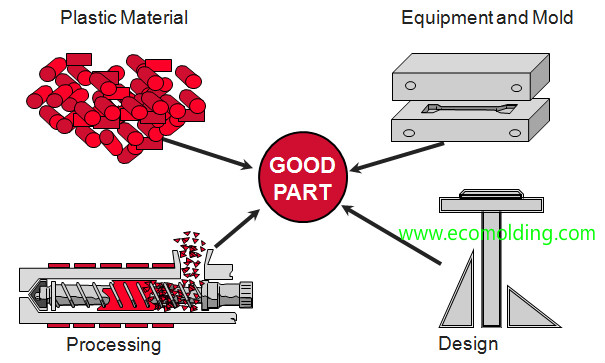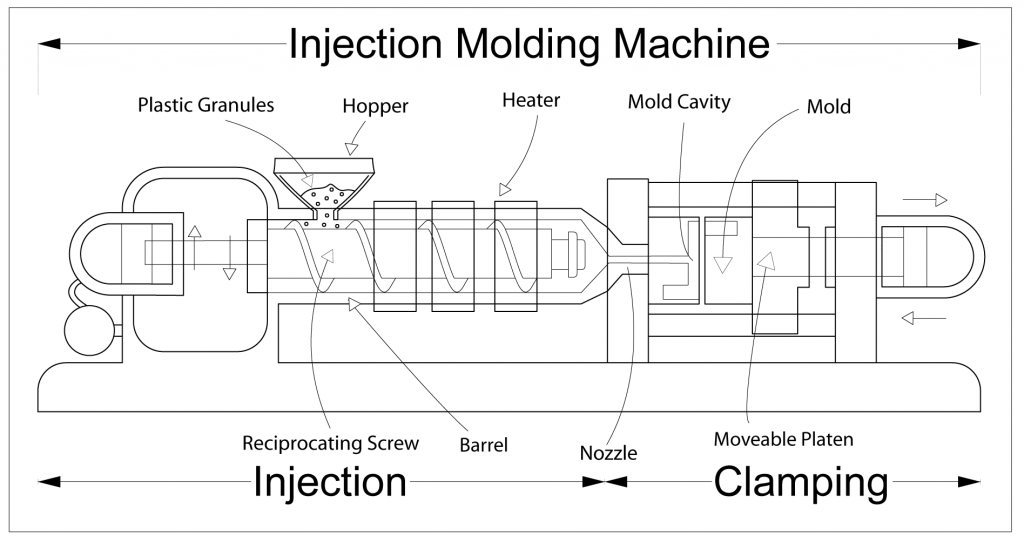Why Plastic Injection Molding Is Essential for Accuracy and Toughness
Why Plastic Injection Molding Is Essential for Accuracy and Toughness
Blog Article
Understanding the Basics of Plastic Shot Molding Processes
Plastic shot molding functions as a cornerstone of modern-day production, providing a methodical method to generating complex components with precision. This process not only includes the basic actions of melting and injecting products right into mold and mildews however additionally entails a nuanced understanding of numerous affecting variables, such as temperature and pressure. As industries progressively demand effectiveness and top quality, the details of this technique come to be more vital. Checking out these crucial aspects can disclose just how even small changes can result in considerable renovations in production results, questioning concerning the possibility for development in this recognized process.
What Is Plastic Shot Molding?
Plastic shot molding is a commonly made use of manufacturing procedure that transforms thermoplastic and thermosetting materials into specific and complicated shapes. This strategy is favored for its capacity to produce high quantities of the same components with extraordinary precision, making it a vital method in different industries, consisting of auto, durable goods, and medical gadgets.
The procedure involves melting the picked plastic product and injecting it into a mold under high stress. The mold and mildew, designed to the specifications of the preferred component, permits the liquified plastic to take form as it cools and solidifies. When the material has hardened, the mold is opened, and the ended up component is ejected.
Plastic injection molding provides numerous benefits, consisting of lowered waste, consistency in production, and the capability to integrate complex layouts that might be testing with various other producing approaches. In addition, it sustains a wide variety of materials, each giving distinct properties that can be tailored for particular applications. As markets remain to innovate, plastic injection molding remains at the forefront, enabling the growth of innovative products that fulfill evolving customer demands.
The Injection Molding Process
The shot molding procedure is an advanced method that involves a number of essential stages to produce top quality plastic components. At first, plastic pellets are fed into a warmed barrel where they are merged a thick liquid. This molten plastic is then injected under high stress right into a precision-engineered mold, which shapes the product right into the desired form.
As soon as the mold and mildew is filled up, the plastic is allowed to cool down and strengthen, taking the form of the mold dental caries. Air conditioning time is vital, as it impacts the cycle time and the final residential or commercial properties of the molded component. After sufficient air conditioning, the mold opens, and the ended up element is expelled using ejector pins.

Products Used in Injection Molding
Various materials can be made use of in the injection molding process, each offering unique homes that cater to particular applications. The most frequently utilized products consist of thermoplastics, thermosetting plastics, and elastomers.

Thermosetting plastics, like epoxy and phenolic materials, undergo a chemical modification throughout the healing procedure, causing a rigid, stringent framework. These products are optimal for applications calling for high warmth resistance and architectural stability, often see it here utilized in vehicle components and electrical insulators.
Elastomers, consisting of silicone and rubber-based materials, offer adaptability and resilience. Their one-of-a-kind homes make them appropriate for applications that require flexibility, such as seals and gaskets.
In addition, specialized products like bio-based plastics and compounds are acquiring grip for their ecological advantages and boosted performance features, widening the extent of injection molding applications in various markets. Recognizing the properties of these products is essential for choosing the proper kind for certain tasks.
Advantages of Injection Molding
Injection molding stands out as a highly efficient manufacturing process that offers numerous advantages for producing complex parts Check This Out with accuracy. Among the most considerable benefits is the capacity to create intricate layouts that would certainly be challenging or difficult to achieve with other methods (Plastic Injection Molding). The process permits detailed features and limited resistances, making certain high-grade parts
Additionally, shot molding is understood for its rapid manufacturing abilities, making it a perfect choice for high-volume production. When the mold is developed, components can be produced promptly, decreasing lead times and enhancing total efficiency. This efficiency not just reduces production prices but likewise offers an one-upmanship in the marketplace.
The adaptability of materials used in shot molding further improves its charm. A wide variety of thermoplastics and thermosetting polymers can be used, permitting suppliers to choose materials that ideal satisfy their specific demands, consisting of adaptability, heat, and stamina resistance.
Furthermore, the procedure decreases waste, as excess material can often be recycled and recycled. This sustainability facet adds to a minimized ecological impact, making injection molding a liable manufacturing option. Generally, the benefits of injection molding make it a recommended method for numerous markets.
Aspects Impacting Item Top Quality
While numerous elements can affect item high quality in shot molding, comprehending these components is essential for accomplishing ideal outcomes. Secret aspects include product option, refining criteria, and mold design.
Material option plays an essential function, as various polymers show unique homes that impact flowability, stamina, and thermal security. Inadequate product selection can cause problems such as warping or incomplete dental filling.
Handling specifications, including pressure, cycle, and temperature level time, must be meticulously regulated. Variations in these settings can result in variances in component dimensions and surface finish. For instance, exceedingly heats may create deterioration of the polymer, while inadequate stress can result in directory brief shots.
Mold layout is equally vital, as it establishes the flow of the molten plastic and the cooling procedure. Poorly created molds may lead to irregular cooling prices, resulting in dimensional inaccuracies and residual stress and anxieties.
Conclusion
To conclude, plastic shot molding works as an important production process that makes it possible for the reliable manufacturing of top notch parts. Proficiency of the shot molding procedure, including the understanding of materials and the influence of various factors on item top quality, is crucial for achieving optimum outcomes. The advantages of this method, such as cost-effectiveness and design flexibility, further emphasize its importance across several industries, strengthening its standing as a favored selection for high-volume manufacturing.
Plastic injection molding serves as a cornerstone of modern production, supplying a methodical method to creating complex parts with precision.Plastic injection molding supplies numerous benefits, including lowered waste, uniformity in production, and the capability to integrate elaborate layouts that might be testing with other producing methods (Plastic Injection Molding). As sectors proceed to innovate, plastic shot molding remains at the leading edge, allowing the development of innovative products that satisfy developing consumer demands
The shot molding process is an innovative technique that entails several vital stages to create top quality plastic parts.In conclusion, plastic shot molding offers as an essential manufacturing procedure that enables the effective manufacturing of top notch components.
Report this page